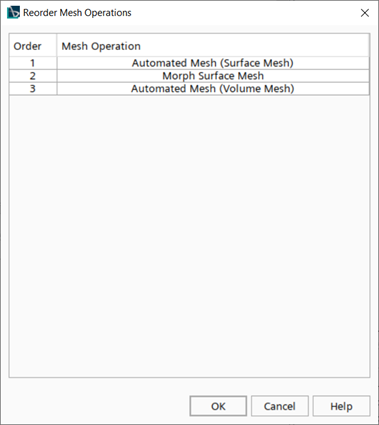Defining the Surface Mesh Morphing of the Y-Junction
The shape optimization process uses the displacements that are computed from the surface sensitivities to deform the geometry parts of interest.
This tutorial uses the Morph Surface Mesh surface operation to optimize the shape of only the Y-Junction part of the manifold. To dictate how the surface mesh is deformed, you specify a displacement vector field function derived from the surface sensitivity.
To define surface mesh morphing of the Y-Junction:
-
Create the displacement field function:
- Right-click node and select and select .
- Rename User Field Function 1 to Imposed Displacement.
- Select the Imposed Displacement node and set Definition to -${DisplacementMultiplier}*$${Adjoint1::Surface Sensitivity}.
-
Define the mesh operation that morphs the surface mesh of the Y-Junction part
according to the computed displacement vector:
-
Click OK.
You reorder the operations so that the morph surface mesh is listed in-between the surface mesh and the volume mesh:
- Right-click the Operations node and select Reorder.
-
In the Reorder Mesh Operations dialog, drag and drop the
Morph Surface Mesh operation from Order 3 to Order
2.

- Click OK.
To ensure a smooth deformation of the Y-Junction, you assign the Global Filter Radius as a surface sensitivity filter.
- Select the node and make sure that the Filter Option is set to .
- To prevent a deformation of the other wall boundaries, multi-select the for Manifold.Downstream Duct 1, Manifold.Downstream Duct 2 and Manifold.Upstream Duct and set the Filter Option to Excluded Surface.
- Save the simulation.